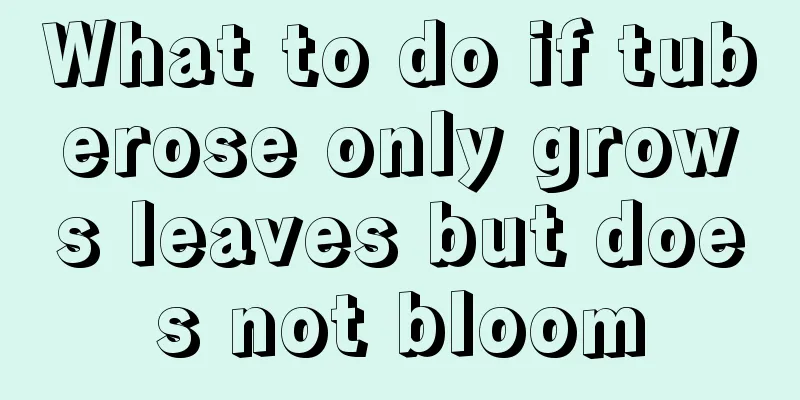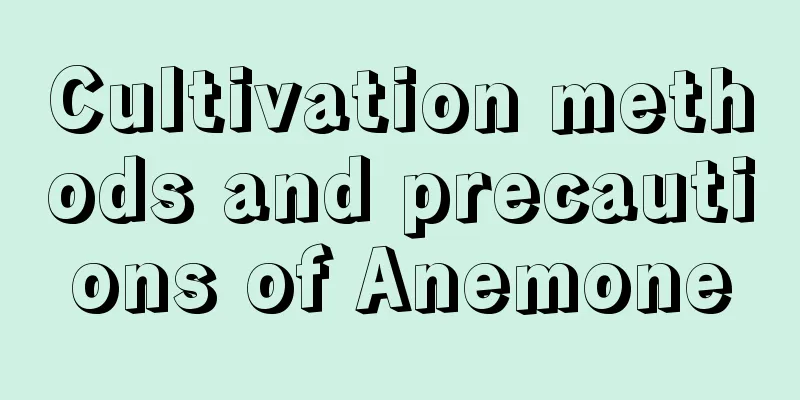What to do if tuberose only grows leaves but does not bloom

The reason why tuberose only grows leaves but does not bloomThe plant has not yet reached flowering ageThe flower buds of tuberose have already formed on the bulbs one year before planting. The reason why only leaves grow but no flowers bloom may be that the planted plants are too small and have not reached the flowering age, so they do not bloom. Digging bulbs at the wrong timeThe bulbs are dug out too early and the flower buds have not yet differentiated inside the tubers, so only leaves will grow but no flowers will bloom after planting. Digging the bulbs too late can also cause the tuberose to only grow leaves but no flowers. The temperature is too low in winter, and the tubers are exposed to cold and freezing in the soil, causing the flower buds inside the tubers to be frozen and may even rot. This situation can also cause the tuberose to only grow leaves but no flowers. Improper storage of bulbs during winterImproper storage of tubers in winter, placing the bulbs in a dry cellar after drying, or burying them tightly with straw and soil will also result in fewer flowers. OverfertilizationApplying too much nitrogen fertilizer after planting will cause the stems and leaves of tuberose to grow too long. This situation will cause tuberose to bloom less frequently, or even not bloom at all in severe cases. What to do if tuberose only grows leaves but does not bloomChoose good varietiesWhen choosing tuberose, you should choose those with larger and healthier tubers for planting. Proper storage in winterWhen storing tubers in winter, the room temperature should be maintained at 25℃-26℃. The moisture in the tubers will be gradually reduced until the outer skin becomes dry and wrinkled. Then the temperature should be lowered by 15℃-20℃ until they are taken out of the cellar in the next spring. To store tubers in winter, you can also choose to hang the tubers indoors and place them under the stove for smoking. Baking can make the tubers drier, thus forcing the tubers of tuberose to enter a dormant period, which is beneficial for growth and differentiation of flower buds after planting in the spring of the following year. Reasonable fertilizationApply less fertilizer in the early stage of planting. Wait until the flower stems are about to emerge or before flowering, then apply fertilizer and also apply top dressing. Generally, apply it once one month after planting, once before flowering, and then once every one and a half months or two months. |
<<: What to do if the creeping grass grows too tall
>>: Why do banyan trees drop leaves?
Recommend
Disease and pest control and cultivation techniques of Rhododendron pubescens
The hairy azalea, also known as the splendid azal...
Cultivation methods and precautions of creeper, what to do if you apply too much fertilizer
1. Breeding methods 1. Light: Ivy has strong vita...
How to pinch the rubber tree
1. Principle: In order to make its side branches ...
Does geranium like water? Is it a water-loving plant?
Do geraniums like water? Geranium likes water. It...
How to cultivate lotus leaf correctly
Growth conditions of lotus One-leaf lotus is afra...
How long does it take for grapes to ferment before they can be drunk? Is there alcohol?
1. How long does it take to ferment before drinki...
What to do if the leaves of the money tree droop
1. Causes and measures 1. Root rot Many times lea...
What to do if freesia grows too tall
To prevent freesia from growing too tall, you nee...
How often should I water the roses?
How often should I water the rose? Generally, you...
Honeysuckle planting technology and key points of cultivation management
Honeysuckle, scientifically known as Lonicera jap...
How to care for the bulbs after the amaryllis flowers bloom
1. Pruning To reduce nutrient consumption, you ne...
How to water the Love Manjin
Watering tips for the vine of love The love vine ...
How to propagate Hoya and what to pay attention to
How to propagate Hoya The main ways of propagatin...
What fertilizer is best for ivy
Time to fertilize ivy Ivy grows vigorously in spr...
Is planting betel nut profitable? What is the profit of planting one acre?
Is betel nut planting profitable? Planting betel ...









